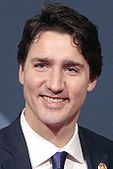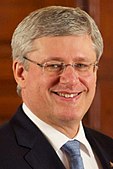
Back الانتخابات الفيدرالية الكندية 2015 Arabic Парламенцкія выбары ў Канадзе (2015) BE ھەڵبژاردنی فیدڕاڵیی کەنەدا (٢٠١٥) CKB Kanadische Unterhauswahl 2015 German Καναδικές ομοσπονδιακές εκλογές (2015) Greek 2015 Canadian federal election English Elecciones federales de Canadá de 2015 Spanish انتخابات فدرال کانادا (۲۰۱۵) FA Kanadan parlamenttivaalit 2015 Finnish Élections fédérales canadiennes de 2015 French
| ||||||||||||||||||||||||||||||||||||||||||||||||||||||||||||||||||||||||||||||||||
All 338 seats in the House of Commons 170 seats needed for a majority | ||||||||||||||||||||||||||||||||||||||||||||||||||||||||||||||||||||||||||||||||||
|---|---|---|---|---|---|---|---|---|---|---|---|---|---|---|---|---|---|---|---|---|---|---|---|---|---|---|---|---|---|---|---|---|---|---|---|---|---|---|---|---|---|---|---|---|---|---|---|---|---|---|---|---|---|---|---|---|---|---|---|---|---|---|---|---|---|---|---|---|---|---|---|---|---|---|---|---|---|---|---|---|---|---|
| Opinion polls | ||||||||||||||||||||||||||||||||||||||||||||||||||||||||||||||||||||||||||||||||||
| Turnout | 68.3%[1] ( | |||||||||||||||||||||||||||||||||||||||||||||||||||||||||||||||||||||||||||||||||
| ||||||||||||||||||||||||||||||||||||||||||||||||||||||||||||||||||||||||||||||||||
 Popular vote by province, with graphs indicating the number of seats won within that province. (Because seats are awarded by the popular vote in each riding, the provincial popular vote does not necessarily translate to more seats.) | ||||||||||||||||||||||||||||||||||||||||||||||||||||||||||||||||||||||||||||||||||
| ||||||||||||||||||||||||||||||||||||||||||||||||||||||||||||||||||||||||||||||||||
The 2015 Canadian federal election (formally the 42nd Canadian general election) was held on October 19, 2015, to elect members to the House of Commons of the 42nd Canadian Parliament and the Prime Minister of Canada. The 2015 election were issued by Governor General David Johnston on August 4.
The election was one of the longest in Canadian history.[2] It was also the first time since the 1979 election that a Prime Minister attempted to remain in office into a fourth consecutive Parliament and the first time since the 1980 election that someone attempted to win a fourth term of any kind as Prime Minister.
The Liberal Party, led by Justin Trudeau, won 184 seats, allowing it to form a majority government with Trudeau becoming the next Prime Minister.[3] Trudeau was sworn in on November 4, 2015.[4]
- ↑ "Federal election voter turnout 68.3 per cent, highest in 22 years: official vote count". CBC.ca. November 5, 2015. Retrieved June 3, 2016.
- ↑ Only the first two election campaigns after Confederation were longer: 81 days in 1867 and 96 days in 1872. In those early days voting was staggered across the country over a period of several months, necessarily extending the length of the campaigns. Since then, the longest campaign was 74 days, in 1926. (Canadian Press, "Imminent federal election to be costliest, longest in recent Canadian history". Toronto Sun, 29 July 2015)
- ↑ Zurcher, Anthony (20 October 2015). "Trudeau brings Liberals back on top". BBC News. Retrieved 22 October 2015.
- ↑ Patricia Treble. "When does Justin Trudeau become prime minister?". Macleans.ca. Retrieved October 28, 2015.




